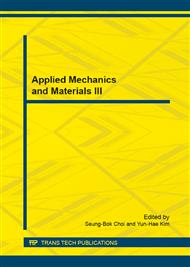p.575
p.583
p.587
p.591
p.596
p.601
p.605
p.610
p.615
Preparation and Properties for Solid Solution Ce0.8Pr0.2-xSmxO2-δ(x=0.02, 0.05, 0.1)
Abstract:
Ce0.8Pr0.2-xSmxO2-δ(x=0.02, 0.05, 0.1) solid solutions were synthesized by the sol-gel method. The XRD results show that all powders calcined at 800 °C are crystallized in a single cubic fluorite structure. The average grain sizes are between 19 nm and 28 nm. The Raman spectra analysis reveals that the solid solution Ce0.8Pr0.2-xSmxO2-δ has a cubic fluorite structure with oxygen vacancies. The oxygen vacancy concentration is increased by doping Sm in Ce0.8Pr0.2-xSmxO2-δ. Impedance spectra shows that the conductivity of rare earth co-doped ceria Ce0.8Pr0.15Sm0.05O2-δ is higher than that of single rare earth doped ceria Ce0.83Sm0.17O2-y. The results also show that Ce0.8Pr0.15Sm0.05O2-δ possess maximum conductivity. At 600 °C, the conductivity is 1.20×10-2S/cm, which is assigned to the higher oxygen vacancy concentration and the hopping electron transition of small polarons in the sample Ce0.8Pr0.15Sm0.05O2-δ.
Info:
Periodical:
Pages:
596-600
Citation:
Online since:
January 2015
Authors:
Price:
Сopyright:
© 2015 Trans Tech Publications Ltd. All Rights Reserved
Share:
Citation:


